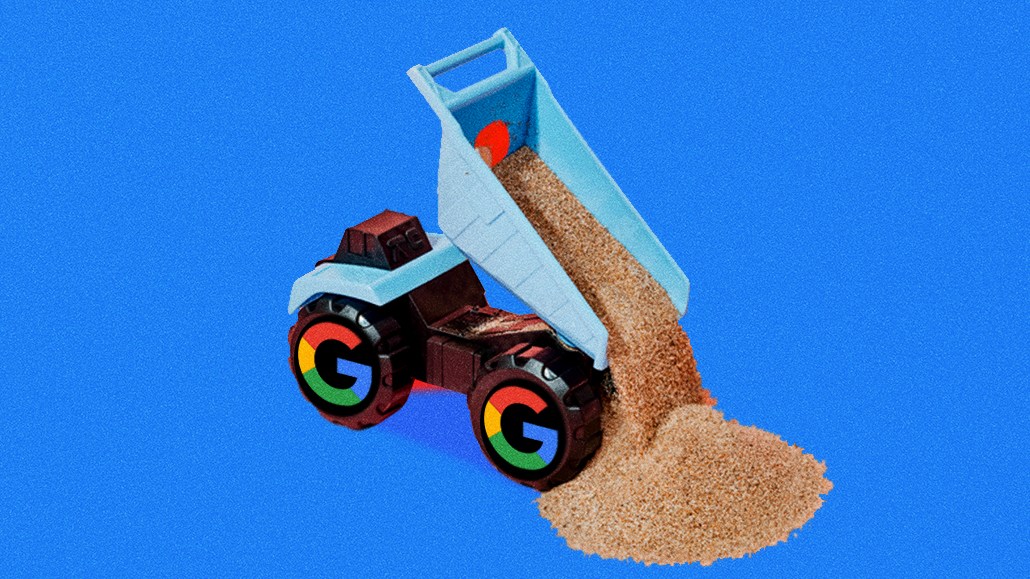Publishers’ Privacy Sandbox testing enters a ‘holding pattern’

Publishers could see the writing on the wall when it came to Google’s announcement that it was delaying cookie deprecation from Chrome yet again.
And while there’s a shared commitment amongst media execs to continue testing cookieless alternatives in the meantime, allocating resources to delve further into Google’s Privacy Sandbox isn’t going to happen — at least not until the company accelerates beyond the 1% deprecation level.
Four out of five publishers who spoke for this story told Digiday that they welcome the delay to fully depreciate third-party cookies from Chrome, especially if the alternative solutions — including Google’s Privacy Sandbox — aren’t up to snuff. And they encourage Google to make improvements based on the reports issued by the U.K. Competition and Markets Authority (CMA) that will ultimately produce a solid solution. The fifth publisher, Justin Wohl, CRO of Snopes and TVTropes, however, said the delay was, “more frustrating than anything.”
“I’d rather have Google take the time and work with partners and make sure that it’s a smooth transition and a great product. So if that means putting it off to do it right, that’s great,” said Kelly Andresen, president of national sales at Gannett.
But in the meantime, Privacy Sandbox won’t be getting publishers’ full attention. Though they’re not planning to pause testing there altogether.
“Google is trying to put forward a solution. Yeah, you can criticize the solution [but] it’s incredibly complex [and] it obviously has flaws — latency is a big concern — but I do believe we can agree they’re trying,” said Emry DowningHall, svp of programmatic revenue and strategy at Unwind Media. “How long do you try if it becomes really costly [and] obviously already time consuming?”
Well, that’s ultimately for Google to decide. But while Privacy Sandbox is available in its current iteration, publishers said there is value in keeping it an option for advertisers to use in their media buys, but they’ve reached a point where not much more can be done testing-wise.
“Obviously, a delay doesn’t mean publishers should stop testing the Privacy Sandbox … we will continue to test,” said DowningHall. But those tests will become more ad-hoc and at the request of publishing partners, like Mediavine and Raptive, or advertisers, given the low testing sample presently available. “What can you really tell about a test that has a 1% allocation? … I’m not sure we could find statistical significance in those results. So we’re just in this holding pattern.”
DowningHall continued that his team spent December and January really putting in the work to experiment in the Privacy Sandbox, and additional labor doesn’t really need to be dedicated there until Google accelerated deprecation beyond 1%.
“A delay doesn’t mean publishers should stop testing the Privacy Sandbox. We will continue to test,” echoed Wohl. However, allocating further development resources to testing the Privacy Sandbox directly won’t be a priority given there’s not enough incentive or need in its current iteration. “If the demand pool increases, more people announce tear buys through component auctions, perhaps we’ll revisit,” he said.
One publisher, who spoke on the condition of anonymity, said because of their company’s small size, “we’re not dedicating a group of people’s time just to testing the Privacy Sandbox.” That is until changes to the Privacy Sandbox make dedicated attention necessary.
The good news is that demand to use the Privacy Sandbox hasn’t become overtly requested amongst some of the publishers’ clientele, meaning they can take their foot off the pedal without fear of financial repercussions.
Andresen said that there have not been explicit requests from Gannett’s advertisers to test in the Privacy Sandbox. However, Jeff Burkett, Gannett’s vp of ad innovations, said that doesn’t mean the publisher hasn’t enabled those signals to be used in the open web for advertisers interested in testing themselves.
This is something Burkett maintains publishers should keep enabled for the time being, even if changes are coming to Privacy Sandbox, to encourage the buy-side to continue experimenting with cookieless solutions. He declined to share how many advertisers have utilized those signals in the open market.
“We need the buyers to be testing … because the real fear that I have is if buyers aren’t ready, when this does actually happen, that just means these dollars move from the open web and move into other places like CTV and the walled gardens. And that is really not a good situation for publishers to be in,” said Burkett.
More in Media

Publisher execs talk AI licensing deals, new applications for AI in latest earnings calls
Publicly-traded media companies touted new deals with generative AI tech companies and other new applications for the technology in their Q1 2024 earnings calls.

Transparency shift: CMOs navigate new norms in agency profit models
Many CMOs seem to be okay with their agencies finding new ways to increase margins, as long as the process is transparent, or at least openly acknowledges a lack of transparency.

Media Briefing: Publishers’ Q1 earnings show promise, but also room for improvement
Publishers’ Q1 earnings show some promise in the digital ad market.







